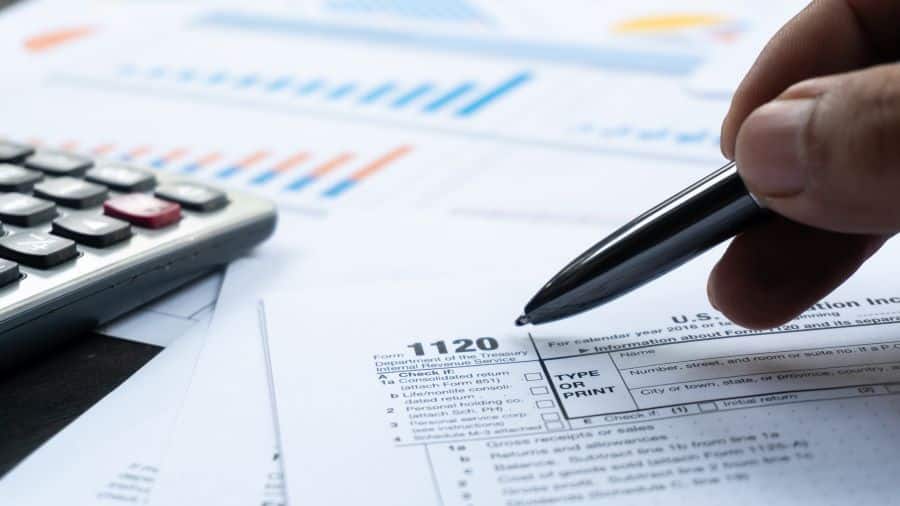
With a periodic inventory system, the determination of inventory levels and calculation of the cost of goods sold (COGS) for a business takes place at regular intervals, as opposed to being a continuous process. A periodic inventory system relies on physical counts of inventory, which are carried out periodically (e.g., monthly, quarterly, or annually), instead of updated inventory records with each sale or purchase, which is referred to as a perpetual inventory system.
The periodic inventory system is an appropriate solution for many smaller businesses or less complex organizations. However, it also entails managing it diligently to ensure that the inventory is accurately recorded and available to support business operations.
- Beginning inventory is recorded: At the start of the accounting period, the inventory on hand is recorded as the beginning inventory. This figure is carried over from the ending inventory of the previous period.
- Purchases in the period are recorded: All inventory purchases made during the designated period are recorded in a Purchases account. This account doesn’t immediately affect the inventory account and is shown in the COGS section of the profit and loss statement. However, it isn’t an accurate reflection of the true COGS; it is only goods purchased during the period.
- Physical inventory count is conducted: At the end of the period, a physical inventory count is conducted to determine the actual quantity of goods on hand.
- Ending inventory is calculated: The physical count provides the quantity of ending inventory. The cost of ending inventory takes the quantity from the physical count multiplied by the cost per unit determined using AVCO, LIFO, FIFO, or another appropriate method. This figure is used to update the inventory account at the end of the period.
- COGS is calculated: The Cost of Goods Sold is calculated by adding the beginning inventory amount to the purchases made during the period. Then, subtract the amount of ending inventory.
COGS = (Beginning Inventory + Purchases) – Ending Inventory
This formula shows that the COGS is equal to the value of beginning inventory plus what you purchased during the period, minus the value of inventory remaining at the end of the period.
- COGS is recorded: You can see in the above formula that the difference between Purchases and Cost of Goods Sold is the change in inventory. The last step of the periodic inventory system is to make a journal entry to adjust the ending inventory to the correct amount, eliminate purchases, and record COGS. Here is an example journal entry:
In this example, COGS equaled the $135,000 in current period purchases, plus the $15,000 decrease in the cost of inventory on hand. Some companies will record this activity in a series of three entries, as shown later in our example.
When Is a Periodic Inventory System Used?
Some scenarios when a periodic inventory system might be a good choice is when the business
- Has limited inventory and low sales volume: If your business deals with a limited amount of inventory and doesn’t experience high sales volume, then physically counting your inventory periodically is a manageable task. This makes the periodic system much easier to implement and maintain.
- Wants a low-cost approach: Periodic systems don’t require investment in sophisticated inventory management software or ongoing data entry for every sale. This can be a significant advantage for startups or businesses with tight budgets.
- Has limited staff: Dedicating resources to constant inventory monitoring might not be feasible if you don’t have a lot of staff. The periodic system allows you to schedule physical counts at designated intervals, streamlining the workload.
- Places less emphasis on real-time data: If having the most up-to-date inventory figures on hand isn’t crucial for your business operations, then a periodic system might suffice. While you won’t have real-time data, you’ll be able to obtain a clear picture of inventory at regular points in time.
- Does manual tracking: If your business relies on manual tracking methods for inventory, such as physical counts and spreadsheets, then a periodic system might be practical. Conducting physical counts at the end of an accounting period will help maintain inventory records without the need for constant updates.
- Is seasonal: Businesses with seasonal inventory, where products are stocked and sold in specific periods of the year, might find periodic inventory management suitable. They can perform counts at the end of each season to adjust records and prepare for the next cycle.
- Is not concerned with shrinkage: The periodic inventory can not separate inventory shrinkage (from theft, breakage, etc.) from inventory that was sold, so if measuring shrinkage is important, then you should spend the money to implement a perpetual inventory system.
Benefits & Drawbacks of a Periodic Inventory System
A periodic inventory system offers several benefits, particularly for smaller businesses. It:
- Is easy to use: It is relatively straightforward to implement and maintain a periodic inventory system, which requires less recordkeeping compared to a perpetual system. This makes it more manageable for businesses with limited resources.
- Is cost-effective: There’s no need for constant software updates or elaborate inventory tracking systems. Physical counts are conducted periodically, which reduces labor costs associated with continuous monitoring.
- Saves you time: Instead of tracking inventory for every sale or purchase, you can focus on ongoing tasks during the period. Physical counts are typically scheduled when it makes sense in terms of your time and resources.
Although periodic inventory systems have their benefits, they can also create some challenges that can affect the activities of a business. Below are some potential drawbacks:
- Provides inaccurate real-time data: The biggest obstacle is unreliable real-time data because the inventory’s accurate picture of stock on hand is only known at count time. This can lead to a stockout if you underestimate demand and run out of stock before the next count. If you overestimate demand and end up with more than you need, this can tie up capital and incur storage costs.
- Increases risk of errors: Manual physical counts are prone to human error, which can lead to inaccurate COGS calculations and financial statements.
- Means labor-intensive inventory counts: If your counts involve a lot of different types of inventory, a physical count could shut down your warehouse and tie up dozens of people for days on end.
- Produces limited sales data: Without constant tracking, it’s difficult to analyze sales trends and identify fast-moving items. This can hinder informed decisions about purchasing and marketing.
- Doesn’t measure shrinkage A perpetual inventory system assumes the entire decrease in physical inventory is due to sales. It cannot differentiate between goods sold versus shrinkage like theft, breakage, etc.
Example of a Periodic Inventory System in Use
Let’s say a small independent bookstore called Page One uses a periodic inventory system. At the end of each year, the owner does a manual count of all the books in the store, which gives them the starting inventory value for 2023. Throughout the year, it records all of the new book purchases to the Purchases account in the accounting software. When the month ends, they close the shop for a few hours and conduct another full inventory count.
Here’s how they calculate the COGS at year-end:
- Beginning Inventory: $15,000 worth of books
- Purchases: $45,000 worth of new books in 2023
- Ending Inventory Count: 6,000 books remain on the shelves.
- Ending Inventory Cost: Assuming the average cost of books in the beginning inventory and purchased throughout the year was $2, the bookstore calculates the cost of the ending inventory of books as $12,000.
Using the periodic inventory formula:
COGS = (Beginning Inventory + Purchases) – Ending Inventory
COGS = ($15,000 + $45,000) – $12,000
COGS = $48,000
This tells the bookstore owner that they sold $48,000 worth of books during the year. The $12,000 remaining becomes the beginning inventory value for the next year.
Periodic Inventory System Journal Entries
Let’s use the example above to illustrate the journal entries used to record purchases during the year and then the COGS sold at the end of the year when physical inventory is taken. Following are the steps to take to record the journal entries.
Recording Purchases Throughout the Year
Throughout the year, Page One makes various purchases of inventory. Each purchase is recorded in the Purchases account. Here are a few example entries:
- Record the purchase of $5,000 worth of books on March 12, 2023.
- Record the purchase of $10,000 worth of books on July 21, 2023.
- Record the purchase of $30,000 worth of books on November 16, 2023.
These entries update the Purchases account throughout the year. When all are added, the total purchases for the year are $45,000.
Making Year-end Adjustments
At the end of the year, the store performs an inventory count, and the necessary adjustments are made to reflect the inventory and calculate the COGS.
- Remove Beginning Inventory: First, remove the beginning inventory from the books and record it as COGS:
- Transfer Purchases to Inventory: Then, transfer the total purchases during the year from the Purchases account to the COGS account:
- Record Ending Inventory cost: Finally, remove ending inventory cost from COGS:
Frequently Asked Questions (FAQs)
With a perpetual inventory system, you have a running record of inventory on hand and the cost of goods sold after each sale or purchase. A periodic inventory system, on the other hand, uses physical counts of inventory that take place at certain regular intervals of time (for example, every quarter) to determine how many goods remain in inventory and how many goods have been sold. There is no daily data regarding inventory levels. For more information about the difference between these two types of inventory systems, see our comparison of perpetual vs periodic inventory systems.
To establish a periodic inventory system, you must have a record of beginning inventory, a record of purchases made during the period, and an accurate physical count at the end of that period.
Because of the time and labor involved, most companies only conduct physical inventory counts at the end of the year. Estimates of inventory are generally used for monthly or quarterly financial statements.
Periodic inventory systems are best for small businesses with a low inventory turnover, few types of products for sale, and low inventory amounts. If you need to track your inventory turnover in real time, a perpetual inventory system might be a better fit for your business.
Bottom Line
Periodic inventory is a straightforward, cost-effective method for tracking inventory and calculating COGS that is suited to smaller businesses or those with less complex inventory needs. It provides a snapshot of inventory levels at specific points in time, but not a continuous view. However, it does sacrifice real-time accuracy and operational efficiency compared to perpetual inventory systems. By understanding its strengths and limitations, you can determine if a periodic inventory system is the right fit to keep your stock under control and your business running smoothly.





